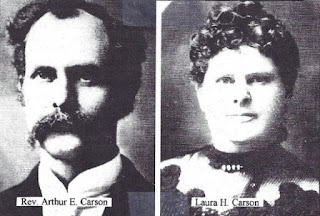Old Testament vs. New Testament - what are the differences?
While the Bible is a unified book, there are differences
between the Old Testament and the New Testament. In many ways, they are
complementary. The Old Testament is foundation; the New Testament builds on
that foundation with further revelation from God. The Old Testament establishes
principles that are seen to be illustrative of New Testament truths. The Old
Testament contains many prophecies that are fulfilled in the New. The Old
Testament provides the history of a people; the New Testament focus is on a
Person. The Old Testament shows the wrath of God against sin (with glimpses of
His grace); the New Testament shows the grace of God toward sinners (with
glimpses of His wrath).
The Old Testament predicts a Messiah (see Isaiah 53), and
the New Testament reveals who the Messiah is (John 4:25–26). The Old Testament
records the giving of God’s Law, and the New Testament shows how Jesus the
Messiah fulfilled that Law (Matthew 5:17; Hebrews 10:9). In the Old Testament,
God’s dealings are mainly with His chosen people, the Jews; in the New
Testament, God’s dealings are mainly with His church (Matthew 16:18). Physical
blessings promised under the Old Covenant (Deuteronomy 29:9) give way to
spiritual blessings under the New Covenant (Ephesians 1:3).
The Old Testament prophecies related to the coming of
Christ, although incredibly detailed, contain a certain amount of ambiguity
that is cleared up in the New Testament. For example, the prophet Isaiah spoke
of the death of the Messiah (Isaiah 53) and the establishing of the Messiah’s
kingdom (Isaiah 26) with no clues concerning the chronology of the two
events—no hints that the suffering and the kingdom-building might be separated
by millennia. In the New Testament, it becomes clear that the Messiah would
have two advents: in the first He suffered and died (and rose again), and in
the second He will establish His kingdom.
Because God’s revelation in Scripture is progressive, the
New Testament brings into sharper focus principles that were introduced in the
Old Testament. The book of Hebrews describes how Jesus is the true High Priest
and how His one sacrifice replaces all previous sacrifices, which were mere
foreshadowing. The Passover lamb of the Old Testament (Ezra 6:20) becomes the
Lamb of God in the New Testament (John 1:29). The Old Testament gives the Law.
The New Testament clarifies that the Law was meant to show men their need of
salvation and was never intended to be the means of salvation (Romans 3:19).
The Old Testament saw paradise lost for Adam; the New
Testament shows how paradise is regained through the second Adam (Christ). The
Old Testament declares that man was separated from God through sin (Genesis 3),
and the New Testament declares that man can be restored in his relationship to
God (Romans 3—6). The Old Testament predicted the Messiah’s life. The Gospels
record Jesus’ life, and the Epistles interpret His life and how we are to
respond to all He has done.
In summary, the Old Testament lays the foundation for the
coming of the Messiah who would sacrifice Himself for the sins of the world (1
John 2:2). The New Testament records the ministry of Jesus Christ and then
looks back on what He did and how we are to respond. Both testaments reveal the
same holy, merciful, and righteous God who condemns sin but desires to save
sinners through an atoning sacrifice. In both testaments, God reveals Himself
to us and shows us how we are to come to Him through faith (Genesis 15:6;
Ephesians 2:8).
References:
D. A. Carson and Gregory Beale, Commentary on the New Testament Use of the Old Testament.
D. A. Carson and Gregory Beale, Commentary on the New Testament Use of the Old Testament.
MacArthur, F. John. The MacArthur Bible
Commentary Thomas Nelson: Publisher, 2005.
John Philips, Exploring the Scriptures: An Overview of the Bible from Genesis to Revelation.

Comments
Post a Comment